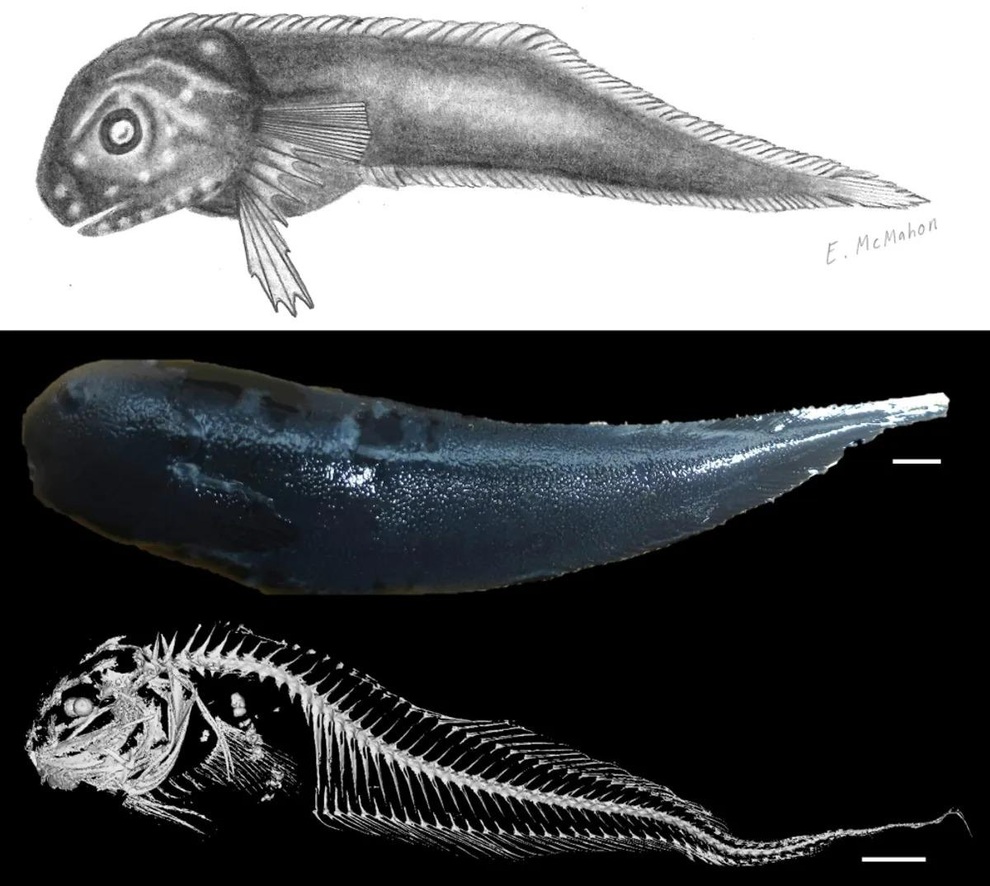At a depth of 3,268m below the seabed, a small but impressive creature was captured on camera by scientists . From the outside, it looks like a bumpy pink mass with big round eyes, like it came out of a cartoon.
And after years of research, scientists have officially confirmed that this is one of three species of snailfish completely new to science.
The discovery, published in the journal Ichthyology & Herpetology , adds to the list of more than 400 snailfish species known globally, and opens a new chapter in the exploration of the deepest seas.

The three new snailfish species described in the study include: the rough snailfish ( Careproctus colliculi ), which has a pink appearance; the dusky snailfish ( C. yanceyi ) and the smooth snailfish ( Paliparis em ), both of which are jet black.
“Two of these were black snailfish collected on the same dive by the submersible Alvin,” said study leader Mackenzie Gerringer, associate professor of biology at SUNY Geneseo. “When I looked more closely at the specimens, I was amazed at how different the two individuals were. They were very different both morphologically and genetically.”

The discovery of two undescribed snailfish species at the same site (Station M, one of the most thoroughly studied deep-sea regions) has shown that ocean diversity still exceeds what we know.
This proves that even in places that seem to have been explored, there are still many mysteries waiting.
Although the colors of snailfish species living in the same deep-sea area may appear different, this does not mean much, because at depths of thousands of meters, where sunlight cannot reach, color no longer plays an important role in hiding or attracting mates.
Instead, these creatures have evolved other senses to survive. According to Mackenzie Gerringer, snailfish can sense their surroundings by sensing vibrations in the water, smelling, and tasting.
Many deep-sea fish actually have the ability to “taste” with their fin rays. It’s possible that the squiggly snailfish uses its 22 flexible pectoral fin rays as sophisticated sensors to do just that.

Snail fish belong to the family Liparidae, and have a distinctive body structure with a large head and a slender body. Some species live in shallow tidal pools, but many thrive in the deepest depths of the ocean.
They have developed many unique survival strategies, from clinging to larger animals with suction pads on their abdomens, to curling up like snails to cling to rocks.
Gerringer's extensive studies of snailfish have helped scientists better understand how they can survive under extreme pressure, extremely low temperatures and without light.
The discovery of these new fish is a powerful reminder that the world below the ocean is still full of mysteries. For these creatures, the deep sea is not a harsh environment, but their home.
The existence of seemingly fragile fish species that thrive there highlights the beauty and resilience of life, and urges us to understand and protect these amazing ecosystems.
Source: https://dantri.com.vn/khoa-hoc/kham-pha-sinh-vat-bi-an-moi-he-lo-ve-dep-cua-bien-sau-20250909230510336.htm











































































































Comment (0)